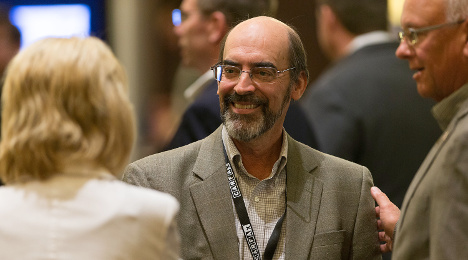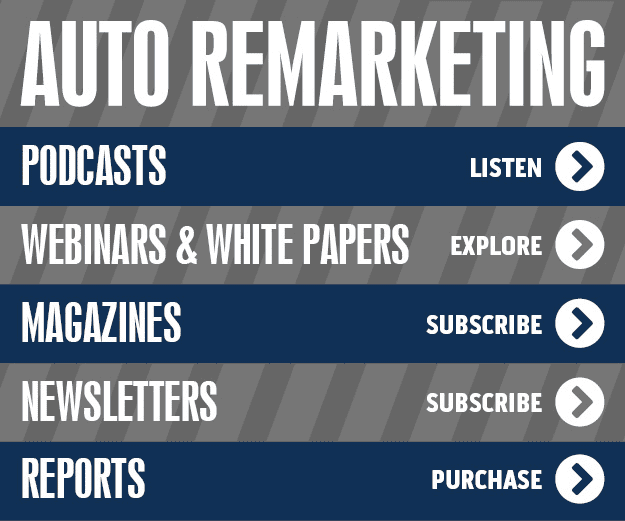Thanks to more data and information from NCM Associates, the National Independent Automobile Dealers Association and Subprime Analytics, Ken Shilson has more evidence showing the performance of the lease-here, pay-here model that more operators are leveraging as a way to augment their traditional retail installment contract business.
Shilson plans to share a wide array of specific metrics and comparisons when the National Alliance of Buy-Here, Pay-Here Dealers hosts its 19th annual conference at Wynn/Encore in Las Vegas on May 23 to 25.
During a recent conversation with BHPH Report, Shilson, the NABD president, shared the data point that stands out most when comparing metrics for buy-here, pay-here versus lease-here, pay-here. Turns out there is a much higher recovery rate when leasing.
Shilson intends to share specifics during one of three conference sessions dedicated to the leasing model.
“What we’ve seen with buy-here, pay-here is as the industry has gotten more challenging with more competition, the buy-here, pay-here customer knows that regardless of what he does with the car he can go out and get another car. A lot of people have literally trashed the buy-here, pay-here vehicle they bought,” Shilson said.
“With leasing, one of the advantages has been is that they don’t seem to do that,” he continued. “It’s not that there is not defaults in leasing because not being able to make their lease payment is the same as not being able to make their car payment. But most of the time, they just voluntarily turn the car back in and you don’t have the chase them all over the country. That’s why we’re seeing a much higher recovery rate for the lease-here model.”
Shilson plans to offer side-by-side comparisons of BHPH and LHPH metrics so attendees can decide if getting into the leasing business is worthwhile if they’re not in it already. Shilson acknowledged the compliance involving the documentation of leasing contracts as well as capital providers willing to send funds to operators booking leases have been the two hurdles that have prevented leasing from gaining a larger foothold in the deep subprime space.
“Because the compliance documentation hasn’t always been right, the capital providers have been reluctant to loan against it because they want to make sure the paperwork is right and everything is going work properly from a compliance standpoint. That has slowed the ability for people to get into this and build it on a big scale, but that is definitely changing,” Shilson said.
“The documentation now is compliant. There are now capital providers who see the leasing model as a viable alternative because you don’t have to stretch the term out 60 or 70 months to get the payment right because you use the residual value to help get the payment correct,” he added.
The other two conference sessions focused on leasing are focused on those two segments Shilson just mentioned — leasing compliance and capital acquisition.
Many more topics are on the conference agenda, including:
1. Regulatory changes and updates
2. Sourcing and financing the vehicles customers want today
3. The critical decisions needed to succeed today
4. The newest technology to improve efficiency and reduce operating costs
5. Operating practices that work both now and in the future
The general education sessions will also include a keynote presentation by Richard Flint on “Embracing Change” preceded by a benchmark/trends update from Chuck Bonano, NIADA 20 Group Director, and I which will put things into a financial perspective.
Shilson went on to mention NABD 2017 also features what he called a “Solutions Hall” along with workshops to help attendees find:
—The capital needed to fund growth
—Ways to regain lost market share
—Technology that increases profits and cash flow
—Ways to reduce bad debts and keep customers paying
—Marketing strategies to compete more successfully
— Compliance to avoid fatal pitfalls
—Compliance with the new AICPA credit loss measurement standard
—Technology to manage and control reconditioning cost
To register or get more information, visit www.bhphinfo.com or call (832) 767-4759.
As part of its continued commitment to the needs of buy-here, pay-here dealers, short-term lenders and the alternative financial services industry, FactorTrust recently announced a tool called FlexFormat; what the company contends is the first industry standard in reporting short-term loan data for products focused on underbanked consumers.
FactorTrust classifies the underbanked typically as consumers with traditional credit scores under 700.
While Metro 2 is the industry standard for traditional credit bureaus, it provides an electronic data reporting format more suitable for prime loans, lacking a sufficient data reporting structure for information like loans with terms less than one month. FlexFormat fills this void. It can provide a single format designed around the needs of short-term lenders, while also enabling Metro 2 standardized reporting. FlexFormat’s process allows customers to submit data to FactorTrust at no cost, which then maps and translates the data into Metro 2 format, allowing the data to be passed on to traditional credit bureaus.
FactorTrust vice president of auto finance Scott Brackin elaborated about how this tool can help BHPH dealerships.
The FlexFormat will enable buy-here, pay-here operators the ability to report more accurately. BHPH customers and the reporting needs of associated loans are very similar to the loan information that FactorTrust has been collecting in the short term loan space,” Brackin said in a message to BHPH Report.
“FactorTrust has heard from many operators, along with dealer management system providers, that stuffing a BHPH loan into Metro 2 is very cumbersome as each of the big 3 have different requirements and standards,” he continued.
“Additionally, BHPH operators can feel safe in reporting their data to FactorTrust without the fear of another alternative credit union ‘poaching’ their customers,” Brackin went on to say. “We feel that the BHPH marketplace is lacking a database that maintains the reporting history for consumers that deal in the BHPH space.
“By opening this up to the BHPH marketplace, we are creating an opportunity for operators to make the needed judgement calls on an applicant by checking out how those consumers are paying other operators,” he added.
FlexFormat also includes additional loan types that Metro 2 doesn’t support, providing better monitoring, quality assurance and data accuracy. This leads to higher and more complete data quality for these additional loan types, and addresses loan-stacking concerns.
FlexFormat fills a market need that has been missing until now, including convenient, single-format reporting where lenders only report credit history information once.
The company went on to mention FlexFormat has a simple XML reporting process, driven by events within the lender’s loan management system, such as:
—Number and value of new and open loans
—Last payment amounts and dates of made and missed payments
—Mapping and translation of data into Metro 2 format
—Real-time reporting that eliminates lag time between reporting cycles, enhancing accuracy
—Secure SSL encryption, ensuring highest industry standards in data security
—Flexible options in reporting only new loan inquiries, or all loan data
With FlexFormat’s high quality data reporting capability, lenders and providers more accurately assess risk and make faster decisions on consumers’ likelihood to repay loans. FlexFormat provides a complete overview of consumers’ creditworthiness, so consumers can get the credit they deserve and can afford. Since its inception, FactorTrust has processed more than 250 million records in real-time.
FactorTrust chief executive officer Greg Rable said the company is uniquely qualified to bring FlexFormat to the market due to its experience working with both Metro 2 and short-term lending data. This proprietary format is founded on FactorTrust’s expertise in working with data reporting of short-term and non-prime loans.
“Because Metro 2 cannot support reporting of alternative loans for underbanked consumers, we developed FlexFormat to provide an industry standard and process that has gone unmet by the Big 3 bureaus,” Rable said. “This benefits not only the lenders who have asked for a one-to-many reporting format, but also the consumers who have been, until now, widely unrepresented by the Big 3 bureaus.
“FlexFormat easily configures and maps customers’ data in a way that is digestible by the Big 3 bureaus,” Rable added.
With the deadline to file federal income tax forms passing on April 18, Cox Automotive chief economist Tom Webb reflected back on what’s known as tax season but likely isn’t the resounding retail period for buy-here, pay-here dealers it once was.
Perhaps impacting this year’s season most was the change in federal rules requiring tax refunds involving the Earned Income Tax Credit or the Additional Child Tax Credit to be held until Feb. 15. Webb mentioned that when that date arrived, “the flood gates opened,” and a record $74 billion in tax refunds was distributed during the single week ending Feb. 17.
According to the latest data from the Internal Revenue Service that Webb cited, total refunds still surpassed $200 billion by the close of March. They remained off year-over-year by only about 0.8 percent or $1.8 billion.
During his last conference call for the company, Webb said the refund activity eventually sort of shook itself out by the time the first quarter closed.
“It really had less of an impact than I would have expected. It was not delayed all that much,” Webb said about the new federal mandates. “That flow of funds over $70 billion in the one week ending Feb. 17 pretty much got us back up to where we should have been. You’re talking a delay of two weeks, maybe in terms of flows of actually funds.
“In speaking with dealers, it was a relatively modest setback,” he continued.
“Speaking to lenders, people used that money to get themselves right,” Webb went on to say. “It probably made their delinquencies look a little worse than they normally do in the first part of February. Then people get caught back up.
"I think it had more of an impact on those delinquency measures than the actual used-vehicle retail deliveries,” he added.
And speaking of those deliveries, as many BHPH operators are doing, they’re leveraging solutions from companies such as TaxMax to turn metal as the holidays arrive.
“(Tax season) certainly has been less of a boost than what we’ve seen in the past. Some of that is due to the fact that dealers have been able to smooth it out a little bit,” Webb said. “Many of them use those down-payment deferral programs and are actually buying vehicles at auction in October and selling them in November and December through those programs.
“The down payment deferral program is basically the same thing without the regulatory problems,” he continued. “It’s good for dealers to smooth out that process.”
Larry Dixon, executive analyst at J.D. Power Valuation Services, elaborated about the impact of tax season in a video available here as well as at the top of this page.
Wayne Reaves, one of the leading providers of dealer management software to independent dealers since 1987, will soon enhance its flagship product with NADA Values from J.D. Power Valuation Services.
According to Jason Reaves, president of Wayne Reaves, “Our integration of used-vehicle values from J.D. Power Valuation Services makes the process of pricing a vehicle much easier. This ultimately saves the independent dealers — who mainly use our software — time and money.”
Reaves went on to mention the team of analysts at J.D. Power Valuation Services, who provide NADA Values, use auction and retail sales transactions — and review asking prices and other relevant information — to accurately value vehicles.
James Gibson, director of business development at J.D. Power Valuation Services said in a news release, “We look forward to working with Wayne Reaves and integrating our accurate, dependable and trusted pricing in their dealer management software.
“Things are about to get a lot more efficient for dealer personnel who are tasked with pricing inventory and use Wayne Reaves’ software,” Gibson added.
Cox Automotive’s Tom Webb said earlier this year that buy-here, pay-here dealers were in a “better position.” Then a few weeks later, Ken Shilson with the National Alliance of Buy-Here, Pay-Here Dealers highlighted how “bad news could be good news for BHPH.”
More upbeat assessments arrived on Monday as the latest installment of the National Independent Automobile Dealers Association's quarterly Business Confidence Survey reflected immense optimism from independent used-vehicle dealers regarding retail sales, consumer traffic, profitability and economic conditions.
The survey, conducted in partnership with Equifax during the first quarter of this year, showed confidence in all of those areas was up substantially from the previous quarter and year-over-year.
Nearly two-thirds of respondents (63 percent) indicated they believe the economy will improve in the next quarter, a significant increase from the previous survey, in which only 34 percent expected economic improvement, and the 36 percent of Q1 2016 — that year’s highest percentage.
Just 2 percent said they expect the economy to decline, down from 22 percent in the Q4 survey.
It’s the first time since Q3 2015 that a majority of survey respondents have expressed a positive outlook on economic conditions.
That optimism is reflected throughout the survey. More than half (53 percent) of the respondents plan to invest in more retail inventory, up from 41 percent in the previous survey, and 54 percent expect to hire new sales staff (up from 32 percent), as 70 percent anticipate retail sales to grow (up from 46 percent) and 71 percent expect customer traffic to increase (up from 36 percent).
On the financial side, the percentage of dealers expecting cash flow to improve (57 percent, up from 34 percent) and credit availability to expand (32 percent, up from 23 percent) over the next quarter was also sharply higher.
“A degree of optimism is always expected with a new year,” Equifax vice president of dealer services John Giamalvo said, “but this level of widespread positivity is unprecedented for this survey as dealers seem primed to ramp up their businesses and position themselves to capitalize on expected opportunities in the year ahead.”
NIADA senior vice president Scott Lilja said it’s no coincidence that the rise in dealer optimism came in the first survey taken since Donald Trump took office as president.
“Certainly the ‘Trump Effect’ has helped drive this newfound enthusiasm in the market,” Lilja said. “The proposed regulatory and tax overhauls promised by the new administration have helped improve the mood of dealers who have long been inundated with federal and state regulatory measures and overly complex tax policy.
“Should some of that burden be lifted by the new administration, the cost of doing business could be substantially reduced,” Lilja added.
Lilja and Giamalvo said other factors driving anticipated retail sales and customer traffic growth include an increase in used vehicle inventory available to meet consumers' ever-shifting needs and the average price differential between new- and used-vehicle average transactions, which hit an all-time high of $11,000 in Q4 of 2016, both of which are expected to bring former new car buyers to independent used car stores to find more affordable transportation.
The National Alliance of Buy-Here, Pay-Here Dealers recently announced the details of its 19th annual BHPH Conference at the Wynn/Encore in Las Vegas on May 23 through May 25. NABD president Ken Shilson explained that the theme of this show is “The Changing World of Buy-Here, Pay-Here,” because the event will focus on how operators can compete successfully in the highly competitive subprime auto finance market of today.
The show will begin at 1 p.m. on May 23 with a first-time attendee reception. This reception will be followed by general education sessions that will feature critical decisions for success, a legislative and regulatory update, an evolutionary view of wholesale acquisition and a benchmarks/trends update.
The opening afternoon will conclude with a gala welcome reception with more than 130 exhibitors in what NABD claims will be the largest trade show in BHPH history.
The next day will open with a networking breakfast with attendees and exhibitors. The general education sessions will resume on the morning of May 24 at 9 a.m. with a keynote presentation titled, “Embracing Change” by nationally recognized motivational speaker Richard Flint.
The morning sessions will conclude with a best-operating practices panel and a technology solutions showcase featuring innovative new technology to improve efficiency and profits.
After lunch on May 24 and continuing through the following morning, 12 interactive workshops will begin covering:
—An accounting/tax update
—Capital
—Compliance hot topics
—A current developments update
—Getting your best customers back
—Reconditioning best practices
—Keeping customers paying and increasing recoveries
—Sourcing and financing the right inventory
—Technology solutions for GPS
Shilson said these sessions will allow attendees to ask questions and find solutions to the biggest challenges facing the subprime finance market of today.
“Not only is the BHPH industry different but so is this conference,” he said. “The general education sessions will alert attendees to the biggest challenges they must solve to compete more successfully. Our workshops and the ‘Solutions Hall’ are filled with experts that can help provide the best answers for those challenges.
“This show is a must-attend for both new and experienced operators who need to adopt the changes required to operate successfully today,” Shilson went on to say..
On May 25, breakfast and lunch will be held in the ‘Solutions Hall” to facilitate networking between attendees, experts and sponsors.
All the educational sessions will be at Encore this year which was recently renovated and won the Travelers Magazine award as the finest hotel in Las Vegas. All the Encore rooms are suites and NABD secured $209 discounted room rates with no resort fees while supplies last.
Shilson emphasized the prices for accommodations “make this fabulous facility affordable to everyone.”
Attendees may register online at www.bhphinfo.com or by calling (832) 767-4759. Sponsors who are interested in exhibiting should call the NABD office while space is still available.
“Anyone who is seeking to improve their BHPH business in 2017 is encouraged to attend,” reiterated Shilson, who went into more detail in an online video available here.
Think your buy-here, pay-here operation has been the only one impacted by the delayed release of tax funds to certain consumers? One of the largest BHPH players as well as a finance company that books plenty of non-prime originations discussed the situation recently.
First, a little information background from Cox Automotive chief economist Tom Webb. Because of the new federal mandate requiring tax refunds involving the Earned Income Tax Credit or the Additional Child Tax Credit to be held until Feb. 15, Webb noted that year-to-date tax refunds though Feb. 10 were down 69 percent, or $65 billion, from a year ago. “But then the flood gates opened,” according to Webb, and a record $74 billion in tax refunds was distributed during the single week ending Feb. 17.
As of Feb. 24, Webb indicated year-to-date tax refunds were down 10 percent or $15 billion.
“The unusual flow of tax refund monies this year appears to have had less of an effect on dealers than one might expect, especially since other retailers (most notably, TV and appliance stores) did notice a significant impact,” Webb said in his commentary that accompanied the release of the February Manheim Used Vehicle Value Index.
Meanwhile, the leadership at both America’s Car-Mart and Santander Consumer USA (SCUSA) discussed the impact that tax-refund delay has had on their respective businesses. Car-Mart president and chief financial officer Jeff Williams responded to questions about the topic when the company that has a network of 140 BHPH dealerships throughout the Southeast released results from the third quarter of its fiscal year on Feb. 21.
“It’s a little hard to tell,” Williams responded when asked about the percentage of customers in Q3 who typically used their tax refund to purchase a vehicle. Car-Mart reported that its Q3 retail sales softened by 1.3 percent to 10,866 units, down from 11,013 units a year earlier.
“Last year, the tax money was out basically for the last week of January. So we feel like, looking back, that we had maybe 300 sales last year that didn’t happen this year because of the timing of tax refunds. And yes, theoretically that should all roll into the fourth,” Williams said.
“But the money has been delayed a full month. We’re just now receiving it,” he continued. “So there is some risk that it may be a little lower this year, but our expectations at this point are that the initial fall in the third quarter, if we execute the way we’re planning to, should roll into the fourth quarter with the volumes.”
Over at SCUSA, the tax refund topic came up when the finance company hosted its 2017 Analyst and Investor Day in New York. An attendee asked SCUSA about the subject in light of Car-Mart discussing it, too.
“What we did see up until frankly about a week ago was what we normally expect as we get into February, to start to see application volumes start growing due to tax season impact. We had not seen that early in the month.
“We did start seeing at least what appeared to be the initial signs of some higher app volumes about a week ago. So we'll see,” SCUSA chief operating officer Rich Morrin said during the event on Feb. 23. “Obviously we'll have to see if that trend kind of continues, but it seems like, given the delays, it's definitely slowed down how quickly people have been going at least into car dealerships to spend that money.
“We have not seen anything significant in terms of modification differences as a result of the delays. So what we would expect to see if the trend continues over the last week is that maybe the backlog is starting to unwind and people are starting to receive their refunds and we’ll see if they continue to go buy cars with them,” Morrin continued.
SCUSA president and chief executive officer Jason Kulas immediately added, “The key word there is delay. The refunds are coming. They just have been delayed. So I think that's a really important factor to remember.”
Recent press about subprime auto loan performance has highlighted concerns about this market segment. Some has said, “The Federal Reserve recently expressed concern that delinquencies among auto borrowers with weak credit has been rising.”
A recent article in USA Today entitled, “It’s Tougher to Get a Credit Card, Car Loan,” noted that the number of subprime auto loans (those requiring a FICO score of 600 or lower) that were at least 90 days late on payments hit the highest level since 2010 in the third quarter of 2016 at 6 million, according to the New York Fed. The bulk of bad loans were by auto finance companies rather than banks, officials said.
In February, Wall Street analyst Wolf Richter published an in-depth report and analysis called, “Seriously Delinquent Auto Loan Surge,” which provides some excellent insights into the causes and predicts what may be ahead. Here are some excerpts from his article:
“Auto loan balances in 2016 surged at the fastest pace in the 18-year history of the data series,” the report said, driven by the highest originations of loans ever. Alas what the auto industry has been dreading is now happening. Delinquencies have begun to surge.
At $1.112 trillion (or $1.6 trillion according to the New York Fed) they’re now 35 percent higher than during the crazy peak of the prior bubble. No way is this an auto loan bubble. Not this time. It’s sustainable; Or at least containable when it’s not sustainable. These ballooning loans have made the auto boom possible.
“Seriously delinquent” auto loan balances, composed of all loans 90 days or more past due rose in Q4 of 2016 to 3.8 percent of total auto loan balances. That puts them right between Q1 and Q3 of 2013, as auto credit was recovering from the financial crisis.
Those seriously delinquent auto loans are an indication of what is next, Richter said: “Losses at auto lenders, particularly those specializing in lending to subprime borrowers, but also other lenders, including captives such as Ford Motor Credit, which has already warned in its most recent outlook that ‘we continue to see credit losses begin to exact their pound of flesh from the lenders.’
“Some specialized lenders might keel over. Larger lenders with good quality loan portfolios will bleed but go on while tightening their underwriting standards in order to weather the storm, and that’s precisely what the auto industry is dreading – tightening credit.”
The auto boom over the past few years was funded by historically low interest rates and loosey-goosey underwriting, with loan terms and loan-to-value ratios often over 120 percent. They made everything possible, but they infused $1.1 trillion in auto loans with some very bad risks.
So it’s all there — the ingredients for bigger losses among banks and investors, a few failures of smaller specialized lenders and belated credit tightening, both out of necessity and due to lower competition among lenders as some of the most aggressive ones will be licking their wounds.”
As president of the National Alliance of Buy-Here, Pay-Here Dealers (www.bhphinfo.com) and Subprime Analytics (www.subanalytics.com), I have been tracking and analyzing subprime and deep subprime market performance for the last 20 years and annually publish industry benchmarks. As such, I agree with the aforementioned analysis and the reasons that subprime delinquencies are now increasing. I also agree that we are not headed for another subprime mortgage crisis with subprime auto paper. A new credit loss measurement standard requiring lenders and borrowers to increase bad debt loss reserves, for all receivables in the future will convert the aforementioned delinquencies into bad debts.
However, if you are an independent used car operator who refused to match the “underwriting aggressiveness” in the markets during the last few years, this bad news creates some exceptional new opportunities to regain market share and increase future profits. The pain suffered by the increased level of defaults in subprime auto finance can result in gains for those who capitalize on them.
In order to capitalize on this opportunity operators must avoid making the same mistakes which caused the past performance problems. Specifically, longer loan terms, lower down payments, loose underwriting, higher amounts financed, and too much vehicle for too little customer, are all recipes for failure, not success! Therefore, operators must embrace changing their approach and implement more prudent underwriting strategies in the future to prosper!
At the 19th Annual BHPH Conference on May 23 through 25 at Wynn | Encore in Las Vegas, many of the nation’s most successful operators and experts will provide attendees with information needed to make the right decisions, update them on market and regulatory developments, introduce new technology which provide cost-effective solutions, and new benchmarks to measure performance. Both new and experienced operators are encouraged to participate and discover new ways to prosper in the changing subprime auto finance market of today.
The old ways are not working, so let’s implement some new ones.
Good luck.
Ken Shilson, who can be reached at [email protected], is president of Subprime Analytics (www.subanalytics.com) and NABD (www.bhphinfo.com). Subprime Analytics uses data mining to perform computerized portfolio analysis for operators and providers. NABD is the nation’s largest BHPH used car special interest group for operators and product providers with more than 13,000 members. NABD will host a National BHPH Conference on May 23-25 at Encore in Las Vegas. For more information call (832) 767-4759 or visit www.bhphinfo.com.
Cox Automotive chief economist Tom Webb acknowledged the past few years probably constituted the most difficult span ever encountered by buy-here, pay-here dealers. Finance companies specializing in the subprime space took on contracts deeper down the credit spectrum, leaving operators wondering where their customers went.
But Webb thinks this year could be much better for BHPH operators who have managed to keep their business intact.
“It’s certainly been a very challenging period for them,” Webb said during a recent phone conversation with BHPH Report. “And in this particular cycle as you well know, it was primarily caused by the subprime lenders buying deep subprime and a lot of new lenders using alternative data sources were buying down into the buy-here, pay-here dealers’ traditional customer base.
“There’s been other cycles where they went through a period where they had a hard time acquiring inventory at the price they wanted,” he continued. “But this past couple of years have really been challenging in terms of the subprime lenders buying down into their space. That cycle appears to have run out. So I’m thinking they’re looking to be in a better position this year because those deep subprime lenders have started to pull back a little bit.”
An example of that pullback is the activity by Consumer Portfolio Services, which booked less paper during the fourth quarter.
“Dealers are pushing bad deals towards us. They know we won’t buy it. I mean they’re desperate to get more cars sold,” CPS chairman and chief executive officer Brad Bradley said during the company’s quarterly conference call.
“You hear that from origination folks. Either they’ll tell you that it's really slow at the dealerships or that they’re seeing these bad loans getting pushed to see if we’d buy them. And of course we won't but still it’s the continuing struggle because we also would like to always buy something,” Bradley went on to say.
Webb and his team also addressed the BHPH market in this year’s Manheim Used Car Market Report, which was released in late January. Along with reiterating the competition BHPH dealers encounter with finance companies, the report also detailed how no longer is there what might be considered a “traditional BHPH model.”
The report explained some operators significantly increased the price point of the vehicles they offer while other dealers kept their price point and built in more goodwill policy work as a reserve.
Furthermore, the report showed other operators delved into the lease-here, pay-here model and while perhaps traditionalists simply worked diligently to capture more upfront money in the deal.
“It really is a market that is best served by the buy-here, pay-here dealers that have been serving that market quite well for many years,” Webb said during the phone conversation.
BHPH inventory analysis
The Manheim report pointed out that rising wholesale prices have often caused headaches for BHPH dealers as they need to find vehicles their customers can afford, but that will also be capable of running the term of the note with minimal repairs.
To give a sense of just how much wholesale prices have gone up over time in the lower price tiers, analysts looked at the average mileage on auction vehicles that sold between $4,000 and $6,000 over the past 16 years. If an operator spent $5,000 on average for a vehicle at auction in 2000, on average they acquired a unit with 84,541 miles.
“Average mileage slipped over the following three years as wholesale supplies grew and the overall pricing environment weakened,” the report said.
But between 2003 and 2014, average mileage for the typical $5,000 auction purchase rose every year, except for the recession of 2008 and 2009. In 2015 and 2016, the report noted BHPH dealers got a little reprieve when the average mileage on a $5,000 auction purchase fell below 120,000 miles for the first time since 2012.
“The ideal inventory in terms of a buy-here, pay-here dealer is dealer consignment vehicles that are relatively aged but they’re still in a condition they’re comfortable with and can run the term of the note,” Webb reiterated.
Given the fact that vehicles today, the quality and durability and their ability to run for a long time if they’re properly maintained, it does open an access for the buy-here, pay-here dealer to buy a vehicle regardless of what their preferred price point is. They can probably find good units out there,” he continued.
The fact that the dealer consignment lanes apparently have the inventory BHPH dealers seek also means fewer operators are scouring salvage auctions in hopes of finding units that can be repaired and retailed with a branded title.
“I think it’s fallen off because the other types of inventory is available,” Webb said. “When it was really a tight situation, certainly everyone was looking at all avenues. To a certain extent from a consignor standpoint they even found some of their vehicles might sell better in a salvage sale as opposed to a traditional sale even though the vehicle might not technically be salvage.
“As you know, many buy-here, pay-here dealers do not have any service shop at all,” he continued. “They don’t want to do a lot of reconditioning. They don’t want to rebuild units. That’s more of a game for the wholesalers to play. Basically they are looking for a clean vehicle in relatively good condition.”
In the latest installment of the annual Best of BHPH issue of BHPH Report, we go behind the scenes with some of the leading companies in the used-car space and their top executives with a few Q&A features.
Next up in this series is Peter Ord, national sales director at DealerSocket.
BHPH Report: How much more critical is a functional DMS to an operator than it was even two or three years ago?
Peter Ord: Today, dealers are required to comply with more regulations than ever before — and this high-scrutiny environment isn’t going away. Some may not want to accept it, but this is the new normal. In light of that realization, DMS is core to the dealership and has become the central source for control of all dealer functions, from evaluation and acquisition of inventory all the way through to sales, collections and analytics. If dealers want to compete and comply in today’s market, they need a DMS.
Regulators like the CFPB aren’t discriminating based on the size of your dealership either. They regularly make examples of both big and small dealers. Enforcement is only becoming more stringent, necessitating documented, automated processes that an effective DMS can provide. Over and over, we observe that if regulators come into your store and see you’re still operating off pen, paper and unlocked filing cabinets, you may be in for a long ride. However, they are much less likely to dig deep into your business if you have defined processes and proven, automated systems in place.
My philosophy is, you just can’t take chances anymore — not when there are this many regulators going from dealer to dealer, looking to sue them for the benefit of the consumer. If you can prove that you make a solid effort though, you are much more likely to be pardoned for a small mistake. We frequently hear from these regulators that they look for dealers who have inadequate infrastructure to support their business, have systematic failures or act with blatant dishonesty.
I would also add that efficiently managing inventory is the life blood of today’s independent dealer, and that is another function a solid DMS can fulfill. Having a prime physical location is no longer the main indicator to success though. As a matter of fact, a dealer’s digital location (i.e., their website) has become more important than their physical store. So it stands to reason that dealers who invest in inventory syndication through their DMS can gain a clear advantage over those who are still running such processes by hand.
BHPH Report: What part of a DMS is still confusing or frustrating for a dealer and why?
Peter Ord: Hands down, I believe the user interface is most confusing. The majority of DMS options focus on features without taking the time to understand how those features should be presented to the user. We admittedly had these same issues with our legacy DMS technology. When we built iDMS, however, we spent a significant amount of time studying design, user interface and user experience. We even dedicated entire teams to each one of those concepts. As a result, many of our iDMS beta users thought we had created a slew of new features that had actually been available to them all along. They just could not benefit from them because they were either too hard to find or were not integrated into the correct workflow.
Along the same lines, many DMS options provide heaps of data, but much of it is not actionable. In order for the data to be helpful to dealers, the software must synthesize and present it in a way that dealers can truly use. In the same way, the processes that a DMS handles can be quite complex, and many DMS options on the market today struggle to address these processes with a streamlined, automated approach that reduces errors and saves time.
The bottom line is that any technology platform should be easy enough and serve up enough valuable information that it becomes impossible for the user not to use it. The intuitiveness of the system is ultimately what should convince an employee to use the software, not the threat of consequences from management.
BHPH Report: What three elements should dealers evaluate when considering which DMS to use?
Peter Ord: First, you should examine a system’s reporting and integration capabilities. I’m referring to real-time, web-based integration, not batch integrations that require more human touch and don’t stay up to date throughout the day. DMS technology with these characteristics enable dealers to do their jobs better, easier and faster. We know a DMS cannot solve all a dealer’s problems, but that’s exactly why it must integrate seamlessly with other products. Much of a DMS’ data is valuable and should translate easily into other software, so it can help dealers manage their customer base more effectively. You want tight integrations between your DMS and CRM so you can get, for example, filtered lists of customers that are nearing finance termination that have not been repo’d or just spent more than $500 in your service lane on a repair. That sort of targeting will prove especially useful when proactively reaching out to previous customers for repeat sales.
Second, you should look at whether a platform is web-based or client-based. Can you use your DMS on any device, anywhere? Seven to 10 years ago, people would have thought you were crazy for using a web-based solution. Now, you’re way behind if you’re still on a client-based platform. Web-based solutions offer more agile integration capabilities than web platforms. It’s extremely difficult to integrate with other products on a client-based system. Of course, users also cannot access the platform at a moment’s notice, optimized on their mobile device. I believe one of the aspects that separates the superior operators from the average is using current, live information to make decisions.
Lastly, a DMS in today’s market should offer a custom user experience based on role. It should focus on how each individual user needs to leverage the DMS and tailor the experience based on their needs. The accounting office, controllers, business owners, GMs, sales managers, inventory managers … they all use the DMS. Yet most DMS technology offers the same user experience to every user, regardless of role. Dealers should look for a DMS that allows you to customize the home screen — and really the entire experience — based on the features each user needs for his or her job. For example, if I’m an inventory manager, I don’t need to wade through functionality to desk deals or even see the collections module. I need to be able to efficiently add inventory, add pictures and descriptions, and post to third-party websites. Those functions should be front and center, easy to access, and simple to execute. I believe dealers are frustrated that it takes them way too long to do basic tasks in their DMS. But you can remove five or six clicks from any given task by using a DMS that allows customization by user role.
BHPH Report: What recent technological advancement has helped DMS function better?
Peter Ord: Cloud-based architecture is becoming more robust, with more enhanced, secure environments and more agile integration capabilities. Five years ago, the only way to integrate with another product was to send batch files in the form of an Excel spreadsheet. Today, we can take advantage of real-time web services to give the experience of using one system instead of two, or three or four. Open APIs help facilitate this data sharing, so information moves two ways instead of just one. None of these benefits are available with a client- or server-based platform.
In addition, user-based customized screens are a game changer. If I’m a collector, I want my workflows and home screen elements to focus only on what I need to do my job most efficiently. This allows for quicker, easier training and ramp-up of new employees. It also helps established employees leverage all the features available to them much faster.
I encourage every dealer to ask their potential DMS provider whether they employ dedicated user experience designers. Most don’t, and you won’t want a DMS with a user interface that has zero study or science behind it. If you have a fantastic feature set with a poor user experience, the features don’t even matter because no one can find them. That’s what leads to frustrating, crowded, and hard-to-use technology. I believe both the feature set and the user experience should be weighted equally.
Additional pieces from this series can be found below:












